- News
- Reviews
- Bikes
- Components
- Bar tape & grips
- Bottom brackets
- Brake & gear cables
- Brake & STI levers
- Brake pads & spares
- Brakes
- Cassettes & freewheels
- Chains
- Chainsets & chainrings
- Derailleurs - front
- Derailleurs - rear
- Forks
- Gear levers & shifters
- Groupsets
- Handlebars & extensions
- Headsets
- Hubs
- Inner tubes
- Pedals
- Quick releases & skewers
- Saddles
- Seatposts
- Stems
- Wheels
- Tyres
- Tubeless valves
- Accessories
- Accessories - misc
- Computer mounts
- Bags
- Bar ends
- Bike bags & cases
- Bottle cages
- Bottles
- Cameras
- Car racks
- Child seats
- Computers
- Glasses
- GPS units
- Helmets
- Lights - front
- Lights - rear
- Lights - sets
- Locks
- Mirrors
- Mudguards
- Racks
- Pumps & CO2 inflators
- Puncture kits
- Reflectives
- Smart watches
- Stands and racks
- Trailers
- Clothing
- Health, fitness and nutrition
- Tools and workshop
- Miscellaneous
- Buyers Guides
- Features
- Forum
- Recommends
- Podcast
news
Volunteer speed monitors accused of “spreading nonsense” after claiming “several cyclists clocked over 30mph” on 20mph street (while ignoring speeding drivers); Want a takeaway? Park in the cycle lane; Football journos on cycling + more on the live blog
SUMMARY
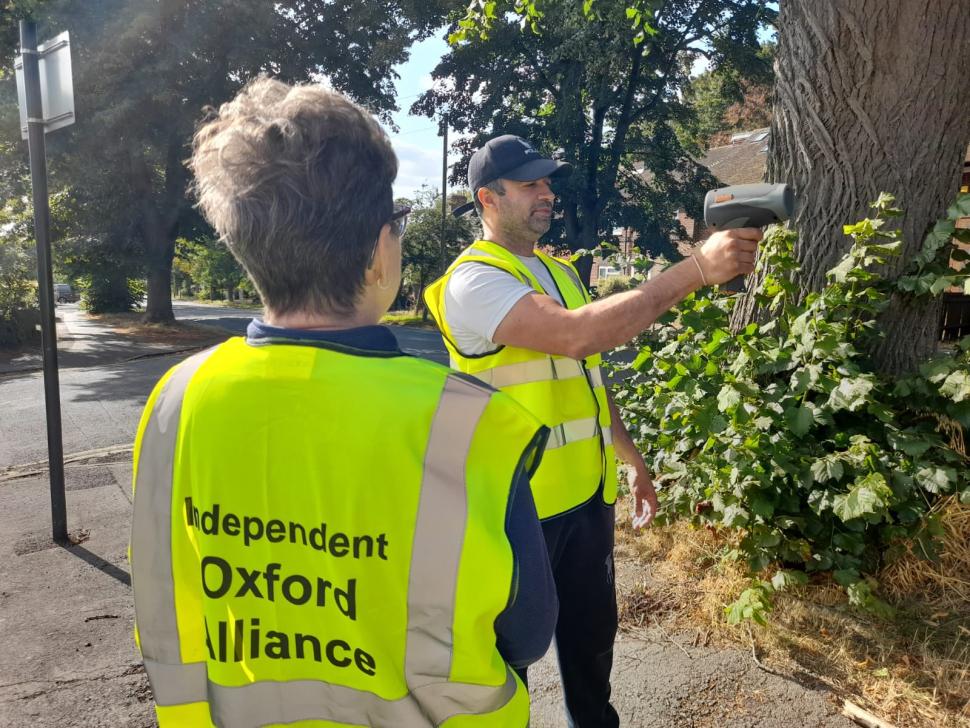 Local group conducting 'speed watch' on cyclists in Oxford (Independent Oxford Alliance)
Local group conducting 'speed watch' on cyclists in Oxford (Independent Oxford Alliance)28 August 2024, 08:07
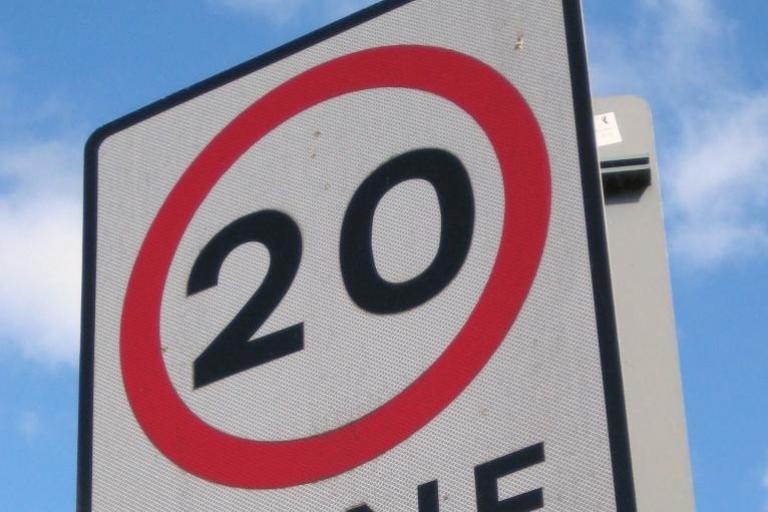
“Is the focus road safety?” Volunteer speed watchers accused of “spreading nonsense” after claiming “several cyclists clocked over 30mph” on 20mph street, while dismissing drivers’ speeds as “on average 25-35mph”
It’s that time of the year again, folks, when community groups don their hi-vis vests, stand by the side of the road for a few hours, and then make vague, unsubstantiated claims about “speeding” cyclists, in turn kicking off a long, undignified debate on social media.
Last November, you may remember, we reported on the live blog that a volunteer speed group in Ringinglow clocked 13 speeding drivers during one such session (including one doing 60mph on the 30mph road), while also pointing out that they spotted “a group of cyclists at 44mph”, which they pointed out was “well in excess” of the 30mph and did not “comply with regulations” – despite, as we’ll note in a minute, speed limits not applying to cyclists.
And now, it’s the turn of another group of residents, this time in Oxford, to stir the pot and go all Telegraph on us when it comes to the speed of cyclists on our roads.
At the weekend, residents and members of the Independent Oxford Alliance, an Oxfordshire-based political party “wanting to bring common sense back into local politics” (we’ll be the judge of that), pitched up on Morrell Avenue, a residential street in the east of the city with a 20mph speed limit in place.
After conducting their speed watch, the IOA posted on social media: “During the session cars were clocked on average at 25-35 mph with several cyclists clocked over 30 mph. Please travel safely everyone.”
Unsurprisingly, the wording of the tweet kicked off an, ahem, lively discussion in the comments, with many questioning the veracity of the group’s claims that “several” people on bikes managed to reach 30mph on the road.
“Who were these cyclists doing over 30mph?” asked David. “The British Olympic Committee needs their names as they could get gold medals in four years’ time.”
“I didn’t know the Vuelta was passing through Oxford!” added another user, while Smudger sarcastically described the road as the “official Cavendish sprint training ground”.
Meanwhile, cycling solicitor Rory McCarron said: “Using your cordless travel hairdryer doesn’t seem like the most reliable speed reader judging by these results…”
However, one local cyclist did point out that the speed-monitoring group was situated at the bottom of the street, which includes pitches of six per cent and where he claims he has “hit 30mph down there without trying”.
Accepting that some – if maybe not several – cyclists could reach 30mph down the hill, others such as Chris called out the group’s apparent need to address the “false equivalence” evident in their post.
“So Morrell Ave is a 20 limit yeah, and you clocked drivers mainly doing 25-35mph, but the few cyclists you claim to have seen doing 30+ are more the issue here? How many cars were doing 25-35?” asked Stuart.
“Sounds like the cyclists are traveling at the same speed as traffic! Where’s the issue here?” added Lauri.
Meanwhile, Gordon noted: “You can’t quote ‘on average 25-35mph’. If you know the average number, then please state the actual value otherwise you are just spreading nonsense.”
Fortunately, thanks to open data source Telraam, we are able to roughly figure out the speeds of motor vehicles on Morrell Avenue, despite the IOA’s vague tweet.
According to the data, over the past two weeks, of the almost 40,000 cars recorded using the 20mph road, 28 per cent were doing between 12-18mph and 29 per cent 18-24mph.
However, 22 per cent were also recorded to be driving between 24-31mph, while eight per cent were spotted at 31-37mph, and three per cent at over 37mph, roughly double the road’s limit.
Noting those numbers, Pedal and Post’s Christopher Benton said: “Cyclists are not the issue, vehicles are the danger to all on Morrel Avenue.”
Returning to the IOA’s tweet, Mark added: “So some 10kg pedal cyclists were recorded at 30mph+, and that warrants highlighting as dangerous, when many 2,000kg+ motor vehicles were doing that or faster speeds?? Maybe a basic physics lesson might help out here.”
“The false equivalence is the duplicity to focus on then,” agreed Stuart. “800 cars doing nearly double the speed limit, but they create a post about a few cyclists not speeding... Is the focus road safety?”
Of course, and as always needs to be highlighted when these kinds of things crop up, there are no speed limits for cyclists in the UK — except where local byelaws apply, such as in some parks. The Highway Code sets out speed limits for vehicles, but does not include bicycles, meaning — byelaw-restricted areas such as some promenades, paths or parks aside — cyclists cannot be fined for speeding.
Instead however, cyclists can be charged with dangerous cycling, under the 1988 Road Traffic Act Section 28, which states an offence is committed if “the way they ride falls far below what would be expected of a competent and careful cyclist” and it “would be obvious to a competent and careful cyclist that riding in that way would be dangerous”, with “dangerous” referring to “danger either of injury to any person or of serious damage to property”.
Responding to the widespread criticism on social media, the IOA released the following short statement: “To cycling Twitter who are getting a bit…well… Yes, it’s downhill. No, we didn’t say it was illegal. Next time we’ll take video. Thanks for popping by.”
28 August 2024, 14:57
“The vast majority of cars are illegally speeding, and yet the problem is a handful of cyclists (lawfully) going faster than 30mph”
It seems that the Independent Oxford Alliance’s “common sense” approach to speed monitoring – and their apparent focus on cyclists, and not the almost ubiquitous speeding on display by motorists on the same road – has sparked yet another, ahem, ‘lively’ discussion in the road.cc comments section and on social media.
“Funny how when they quote the car numbers they’re within a range that gives the possibility of the grand majority being under the speed limit but when they're quoting the bike numbers they're definitely over the ‘speed limit’... *rolls eyes*,” road.cc reader Thrawed said in the comments.
“It’s worse than that,” OnYerBike replied, “The speed limit (for motor vehicles) on that road is 20mph, so what they’re saying is that the vast majority of cars are illegally speeding, and yet the problem is a handful of cyclists (lawfully) going faster than 30mph.”
Meanwhile, Stonojnr added: “The stupid thing is 25mph is considered acceptable or within limit on a 20mph road for cars, unless it’s camera controlled, so they’re probably just following the faulty guidance they’ve been given.
“Whether it’s sensible (careful or considerate) to cycle down a hill at 30mph in 20mph residential area is another matter.”
Offering up some invaluable local knowledge, Mdavidford said: “Calling Morrell Avenue ‘a residential street’ is rather misleading – it does have properties fronting on to it (though set well back from the road, beyond a row of trees and the armour of wall of parked cars), but it’s semi-arterial, forming a major route out to the hospitals, and is pretty lightly foot trafficked.
“They’re trying to represent this as the evergreen side street - quiet, peaceful, serene - that is until Bert cyclist hoons through it, scattering playing children in his wake, when in reality Cyril Steer has already driven everyone off it with his dastardly machines. It’s not an attractive space for people, cyclists or no cyclists.”
Finally, others pointed out the irony of focusing on the speed of cyclists constantly accused of holding up drivers on similar roads.
“There’s a 30 limit near me which is downhill and I regularly get overtaken when I’m cycling near the limit,” said Hirsute. “I’ve recorded drivers passing at speeds of 45 to 50 mph even when I’m in primary approaching a side road.”
And Richard on Facebook concluded: “99 per cent of car drivers exceed 30mph on a regular basis on residential streets.”
But, but, but… cyclists!
28 August 2024, 16:20
Why don’t cyclists use the cycle lanes? Parts 3,490 and 3,491
Belfast’s favourite bike lane blocking spot strikes again:
Years and years and no resolution even after a cyclist was hospitalised on this cycle lane #BigFishParkingLane #RO63XGT pic.twitter.com/gScOVnTXKi
— Brian Shannon (@BrianShannon123) August 27, 2024
And to be fair to the owner of the food van, he’s been very vocal on social media urging customers to park elsewhere.
Not that they seem to be listening, of course…
Shortly after #MW67MSU@Briansmyth99 @JohnODowdSF @PMcReynoldsMLA pic.twitter.com/aU41zAm4dw
— Brian Shannon (@BrianShannon123) August 27, 2024
28 August 2024, 15:38
A long time coming: Eddie Dunbar secures biggest win of his career and long-awaited first grand tour stage with perfectly timed, scintillating attack at the Vuelta, as Ben O’Connor ships 37 seconds to GC rivals after being distanced on final climb
“It’s been a long time coming,” an emotional Eddie Dunbar said, moments after finally, finally securing the first grand tour victory of his career at the Vuelta a España this afternoon.
In the midst of a frantic, chaotic finale fought out by the remnants of the 39-rider group that formed with 100km to go of today’s hilly stage to Cortizo Padron, the 27-year-old Irishman timed his moment to perfection, attacking with 600m to go up the right hand side of the road.
Despite a late chase by Quinten Hermans and DSM’s British youngster Max Poole, who was strong enough to still finish third after accelerating hard on the stage’s final, steep climb, Dunbar had enough in the tank to hold on for a scintillating, perfectly executed victory.
Not only did the Jayco-AlUla rider’s win this afternoon – only the fourth of his pro career – mark a turnaround for a rider whose GC aspirations at this Vuelta were almost immediately snuffed out in the heat of central and southern Spain, it also provides some redemption after a turbulent, injury-plagued year.
“It’s weird how it goes sometimes,” Dunbar said after the stage. “I had a really bad start to the race and I lost a lot of time. I came here to ride GC and I learnt pretty quick that I didn’t have the legs to do it.
“But my preparation was really good, so we had to reassess and go for a stage. And today came an opportunity I didn’t expect, because I tried hard at the start to get in the break and I thought that was my legs gone. But then the big break went, and I thought me and Pippo [Zana] rode really smart. And here we are, I actually can’t believe it.
“It’s been a while since I’ve been in a scenario like this if I’m honest, and I just used my experience. I was suffering a bit on that steep climb and then I realised everyone else was. And with Pippo up the road I was able to take a backseat.
“So I just played my cards and gambled, and backed my finish. I know in a finish like this, after a hard race, I can sprint. But I knew I had to go long, and 600m is a bit long for a sprint, but I knew I had to do that to win.”
Those 600 metres at the front – long, difficult, but ultimately worth it - perhaps offer up a fitting metaphor for Dunbar’s entire career so far, one defined by both promised and setbacks.
Earmarked as a future star from a very young age, the man from Co. Cork endured a difficult first five years as a pro at Team Sky/Ineos, where he was consistently denied opportunities at the races that seem to suit him best – grand tours – despite his success at other stage races.
After moving to Jayco-AlUla in 2023, things initially improved. He finished seventh overall at last year’s Giro d’Italia – his first grand tour since his debut full season at Sky in 2019 – backing that up with another seventh at the Tour of Poland.
However, crashes saw him forced to abandon both the 2023 Vuelta and this year’s Giro early in the first week, a mounting set of issues Dunbar admitted today almost forced him to reconsider his place in the sport.
“Since the Vuelta last year, I’ve had seven or eight crashes, and physically that takes it toll, but mentally too,” he said.
“I’ve thought numerous times that I might not have a future in this sport because of the injuries I had. And this year after the Giro, when I injured my ACL, I thought that could be the nail in the coffin for my cycling career.
“I have incredible support around me, it’s been a long time coming, but to repay them all today means a lot.”
Meanwhile, a few minutes behind Dunbar’s emotional, redemptive heroics, Ben O’Connor’s red jersey defence looked decidedly creakier, as the Decathlon-AG2R rider was forced to concede 37 seconds to a group of GC rivals including Primož Roglič and Enric Mas, after Roglič piled on the pressure on the 14 per cent slopes of the final climb.
Not a disaster for O’Connor by any means, but not a promising sign as we head back into the high mountains, his lead over the seemingly rejuvenated Slovenian cut do 3.16.
But away from the GC battle, the day belonged to Dunbar who, after six years of struggling and fighting, has finally made it to the top, where many had long assumed he was destined to belong.
A long time coming, indeed – but extremely worth it.
28 August 2024, 14:25
“World-first, game-changer” prosthetic arm for cyclists developed with help of GB Paralympians
As the Paris Paralympics gets underway this evening, a collaboration between a prosthetics innovator and GB Paralympians has seen the creation of a “world-first” prosthetic arm to assist riders’ performance and solve “many of the problems commonly faced by para-cyclists when tackling longer distances and hill climbs”.
Read more: > “World-first” prosthetic arm for cyclists developed with help of GB Paralympians
28 August 2024, 13:57
Special national champ’s bike paintjob of the day
Oh, that’s a beauty. Very jealous of Mauro Schmid there.
I may have to switch nationality, start training properly, miraculously acquire some natural talent, and win the Swiss road race championships to get my hands on one…
28 August 2024, 13:36
Monster 39-rider breakaway finally escapes up the road at the Vuelta
I’m not sure what exactly went on in Decathlon-AG2R’s meeting this morning in the team bus, but I imagine – based on the events so far in today’s Vuelta stage – it went something like this:
‘So how many riders do you think we should let in the break, so we can keep things under control nicely?’
‘I’d say about 39 should be fine.’
‘Perfect.’
🫡 @decathlonAG2RLM says: 37 riders is enough for a breakaway today, thank you.
Parece que el equipo del líder, 🇦🇺 @ben_oconnor95, ha decidido que esta es la fuga buena...👀#LaVuelta24 pic.twitter.com/3oFJkB4EqT
— La Vuelta (@lavuelta) August 28, 2024
Of the mammoth 39-rider break which finally winched itself free of the peloton after a frenetic start, quickly opening a gap of around five minutes on the Decathlon-led bunch, Israel-Premier Tech’s George Bennett is the best placed on GC, almost 10 minutes down.
So not quite panic stations yet, but on the lumpy, constantly tough roads of northern Spain, you never know…
28 August 2024, 12:57
Angry people in consultations versus cycling infrastructure, episode 367
28 August 2024, 12:25
Another brutally hilly day awaits at the Vuelta
Death, taxes, and relentlessly tough stages at the Vuelta a España.
Today’s helping of leg-aching climbing is mostly made up of the shorter, lower, punchier variety than what’s to come over the next few days – so will stage 11 represent another opportunity for the breakaway, or will the Cat 3 Puerto Cruxeriras, with its nine per cent average gradient ignite the GC battle?
Or, you know, will Wout van Aert just win again?
28 August 2024, 11:59

“It is nice that I can start in Scotland”: Soudal Quick-Step name strong line-up to support Remco Evenepoel and Julian Alaphilippe at Tour of Britain
Speaking of the Tour of Britain Men, one of the race’s most winningest (sorry) teams have confirmed their line-up for next week’s race, as Soudal Quick-Step (no dino-themed sponsors outside of Spain unfortunately) announced the riders who will be supporting Julian Alaphilippe and Remco Evenepoel on the UK’s rough, draggy roads for six days.
Alaphilippe, of course, is returning to the race he won back in 2018, and finished third at in 2021, two weeks before taking his second straight rainbow jersey, while Evenepoel is starting his first race since his Olympic TT-road race double in Paris, which came off the back of his maiden Tour de France podium finish.
(Zac Williams/SWpix.com)
“I am looking forward to returning to racing at the Tour of Britain, after my post-Olympics break,” Evenepoel said today in a statement.
“My last period of racing was very special for me and it was great that I could recharge a little afterwards, but it’s time to pin on a number again as I look forward to the big races of this autumn. It is especially nice that I can start in Scotland, where I have the memories of winning the Worlds ITT race last summer.”
That headline-grabbing duo will be supported by exciting 20-year-old fastman Paul Magnier, who recently finished second behind Marc Hirschi, and ahead of Magnus Cort and Arnaud De Lie, at the GP Plouay, and equally exciting GC contender Gil Gelders, a 21-year-old neo-pro with two top tens at the Tours of Slovakia and Germany already to his name.
The six-rider line-up is completed by Gianni Moscon and Martin Svrcek.
“We have a strong line-up for this race, which we are happy to do again,” sports director Klaas Lodewyck added.
“The selection will be made in the first three days, when we’ll see what Julian and Remco can do on that hilly terrain. Then, in the next three stages, we should have a bunch sprint, so we’ll support Paul, who comes here after an excellent result in Plouay. Bottom line, we are really looking forward to a week of great racing.”
28 August 2024, 11:29

Tadej Pogačar, Tom Pidcock, and Biniam Girmay confirmed as headliners for GP Québec and GP Montréal ahead of world championships
After racing on home roads at the Tour of Britain Men, Tom Pidcock will hop straight over to Canada, where he will race the GPs of Québec and Montréal as part of his final preparations for next month’s world road race championships in Zurich.
The Ineos Grenadiers rider, who has never raced the hilly one-day, circuit-based WorldTour events in Canada during his career, will be joined across the Atlantic by Tadej Pogačar, who outsprinted Wout van Aert to win the 2022 GP Montréal.
(Zac Williams/SWpix.com)
After resting up following his grand tour double winning exploits this summer, Pogačar will use the Canadian races to fine-tune his form ahead of the worlds, where he will be aiming to become the first male rider since Stephen Roche in 1987 to win cycling’s ‘triple crown’ – the Giro, Tour, and rainbow jersey in the road race – all in the same calendar year.
The races will also be the Slovenian’s first appearance since winning the Tour, and only his fourth and fifth one-day races of the year, after winning Strade Bianche and Liège-Bastogne-Liège, and finishing third at Milan-Sanremo during what has been a truly staggering season.
Alongside Pidcock and Pogačar, Tour green jersey winner Biniam Girmay, last year’s Québec victor Arnaud De Lie, former Montréal and two-time Québec winner Michael Matthews, Derek Gee, 2022 2022 Québec winner Benoît Cosnefroy, Matteo Jorgenson, Simon Yates, Alberto Bettiol, Romain Bardet, and Julian Alaphilippe make up an illustrious start-list in Canada for the races’ 13th editions.
28 August 2024, 10:57
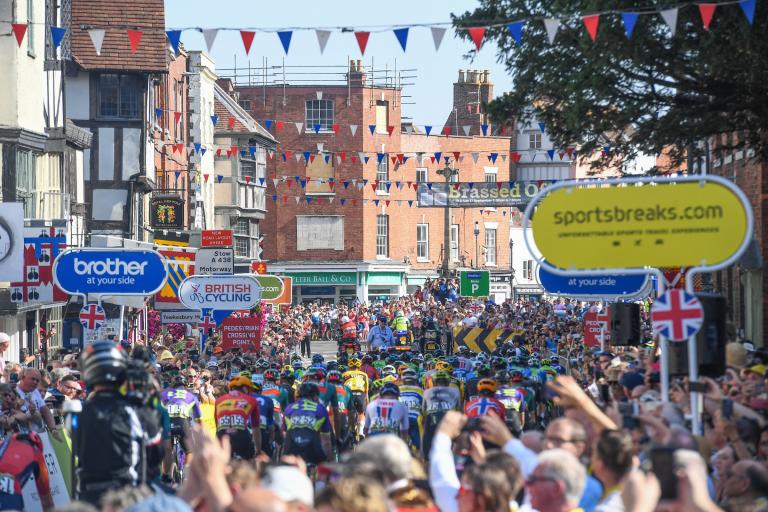
Remco, Pidcock, and errr, Kojack: Tour of Britain Men set for flag-to-flag coverage on ITV4 once again
The men’s edition of the revamped Tour of Britain is fast approaching and new organisers British Cycling have confirmed this morning that the country’s biggest stage race will once again be broadcast live on ITV4, with flag-to-flag coverage of all six stages.
The 2024 race will mark ITV4’s 12th year of providing free-to-air live coverage of Britain’s national tour, and the 16th year it has televised the event in total.
Coverage will get underway next Tuesday (yes, the year really has flown by) at 10.15 for the stage in the Scottish Borders, which will also be available on demand on ITVX, while ITV4’s usual one-hour highlights package will be on each evening.
(Alex Whitehead/SWpix.com)
And as well as the prospect of watching Remco Evenepoel, Tom Pidcock, and Julian Alaphilippe go head-to-head on British roads, ITV4 viewers will also be treated to the channel’s Tour de France commentary A-team of Ned Boulting and David Millar.
“Bringing the Lloyds Bank Tour of Britain Men to as many people as possible whether at the roadside or at home on television, is of huge importance to us,” Jonathan Day, Managing Director of British Cycling Events, which took over the running of the race following the demise of previous organisers SweetSpot, said today.
“We’re delighted to once again have full live free to air coverage of every stage, and with the riders announced so far we know it will be one to remember so fans can look forward to six exciting days of action.”
28 August 2024, 10:46
Right, I’ve got my notepad at the ready. Let’s go… Hold on, could you make it ‘ultra-beginner’ for me?
28 August 2024, 10:10
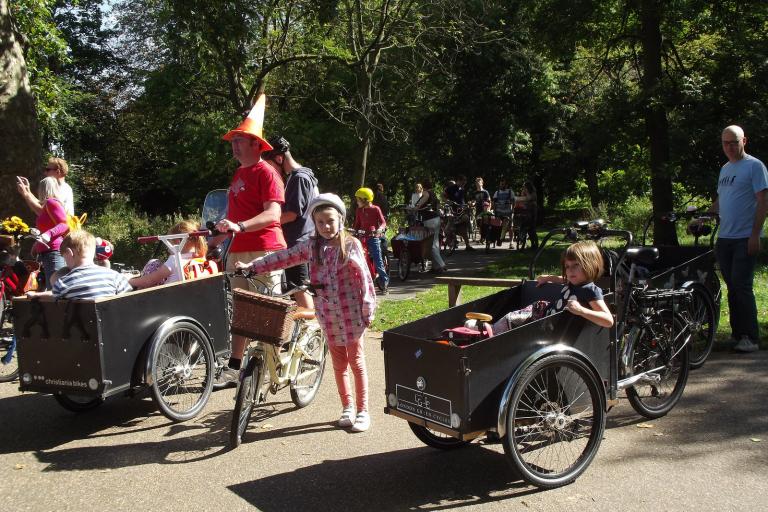
Kidical Mass launches fundraiser to purchase insurance policy for 2024 rides
Kidical Mass, which organises group rides, demonstrations, school streets, and bike buses calling for safe streets for children to cycle and walk in the UK, has launched a crowdfunding appeal to purchase insurance for all its local groups across the country.
According to Reading-based Kidical Mass organiser Kat Heath, the organisation needs to raise £2,522 to cover the public liability insurance for all its UK groups for 2024 and 2025, along with cover for some of their marshals who volunteer to organise the events and help them run smoothly.
Any extra money raised, according to Kat, will be put towards purchasing flag and leaflets for the branches.
“Kidical Mass is a growing worldwide body of people with the same vision – to allow children and young people to be able to safely and independently travel by bicycle wherever they live,” Kat said.
“Their motto is ‘Kids Are Traffic Too’ and they’re looking for ‘space for the next generation’. They spread their vision by arranging local rides for all the family which highlight the demand for improved safe spaces for children to walk, scoot, wheel, and cycle in their neighbourhoods.”
The campaign, which is being held on Crowdfunder, has so far raised almost £1,800.
28 August 2024, 09:39
When football journos do cycling
Look Tom, two Olympic gold medals, a cyclocross rainbow jersey, a Tour de France stage victory on Alpe d’Huez, and a Strade Bianche win later, and you’ve finally made it onto the homepage of the Athletic!
Oh, wait…
I’ll admit, I haven’t read the article as I don’t subscribe to the Athletic, but I do wonder how they linked the Ineos Grenadiers’ faltering transition period in recent years to the United defence’s inability to notice three spare men at the back post in the last minute against Brighton?
I can just imagine Dave Brailsford sitting in a meeting with Sir Jim Pollutes-a-Lot now: ‘Casemiro’s drop-off and our overall lack of legs in midfield is very similar to our over-reliance on Michał Kwiatkowski as a deluxe domestique, road captain, and stage hunter at the Tour – we definitely need to invest in the engine room.’
‘Sorry, what team are we talking about again?’
(SWpix.com)
Anyway, I did notice that the Athletic described the Tour’s polka-dot jersey as the prize awarded for the “most mountain-stage wins”. They’re trying, I suppose…
The article has at least spawned some witty comments on social media.
“When INEOS Grenadiers are doing well at cycling, the press: ‘Means nothing , cycling doesn’t translate to football’. Also: When INEOS Grenadiers are not doing well at cycling, the press: ‘Should #MUFC fans be concerned!?’” wrote Joe.
Meanwhile, one United fan said: “Unless the cycling team are riding to Paris to pick Ugarte up, we should be alright.”
Yeah, that sounds more like a job for Pogačar or Van der Poel…
28 August 2024, 09:23
Allowing cyclists to give way and roll through at stop signs does not have a negative impact on road safety, new research suggests
After obtaining a PhD, lecturing, and hosting a history podcast at Queen’s University Belfast, Ryan joined road.cc in December 2021 and since then has kept the site’s readers and listeners informed and enthralled (well at least occasionally) on news, the live blog, and the road.cc Podcast. After boarding a wrong bus at the world championships and ruining a good pair of jeans at the cyclocross, he now serves as road.cc’s senior news writer. Before his foray into cycling journalism, he wallowed in the equally pitiless world of academia, where he wrote a book about Victorian politics and droned on about cycling and bikes to classes of bored students (while taking every chance he could get to talk about cycling in print or on the radio). He can be found riding his bike very slowly around the narrow, scenic country lanes of Co. Down.
Latest Comments
- thax1 5 min 54 sec ago
I don't consider myself a violent man, but I really don't think I'd tire of hitting him with a shovel. I mean, it'd take some pacing - I don't have...
- Laz 6 min 57 sec ago
OMG- that's so self centred....what about the brotherhood and sisterhood of enjoying a ride and sharing a happy wave with a fellow rider out...
- thax1 33 min 58 sec ago
Cycliq certainly seemed to let a lot of people down in the early days. I held off until the 12 Sport came out, but have been impressed....
- ktache 35 min 31 sec ago
My better half seems to like giving me pressies of Rapha clothing. I am wearing their casual hoodie right now, and very nice it is too. First off...
- thax1 45 min 39 sec ago
Push on through foot numbness and you then arrive at agonising foot cramp....
- ktache 1 hour 12 min ago
Not enough awareness as a driver to notice those 30mph limit roundels.
- Destroyer666 1 hour 23 min ago
Oh dear, to your own lack of understanding. I was not referring to your vague generalisation of "people", I was referring to a particular...
- chrisonabike 2 hours 44 min ago
Easy one that: it wasn't "so much traffic" before the cyclist was there! That queue had been building up behind the cyclist since the lane was...
- eburtthebike 2 hours 51 min ago
"It’s very expensive, I suspect, and I think it’s too much.”...
- lesterama 3 hours 10 min ago
Looks like he's risking riding without inserts. Didn't Fred Wright come a cropper in the Arenburg for the same reason?

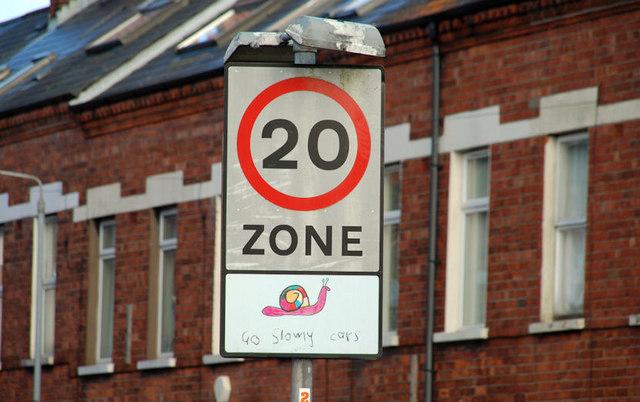
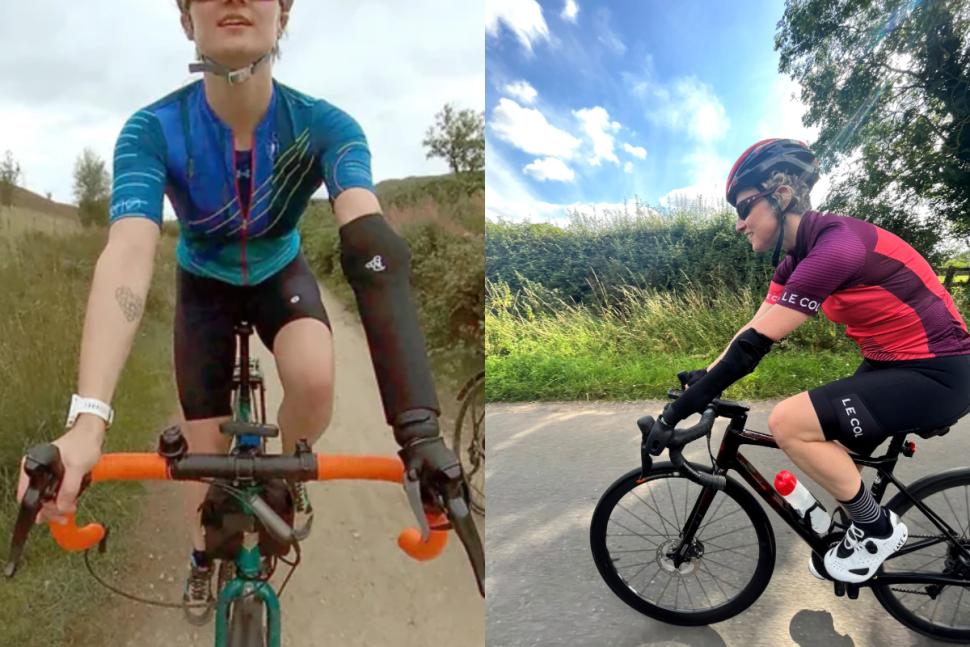






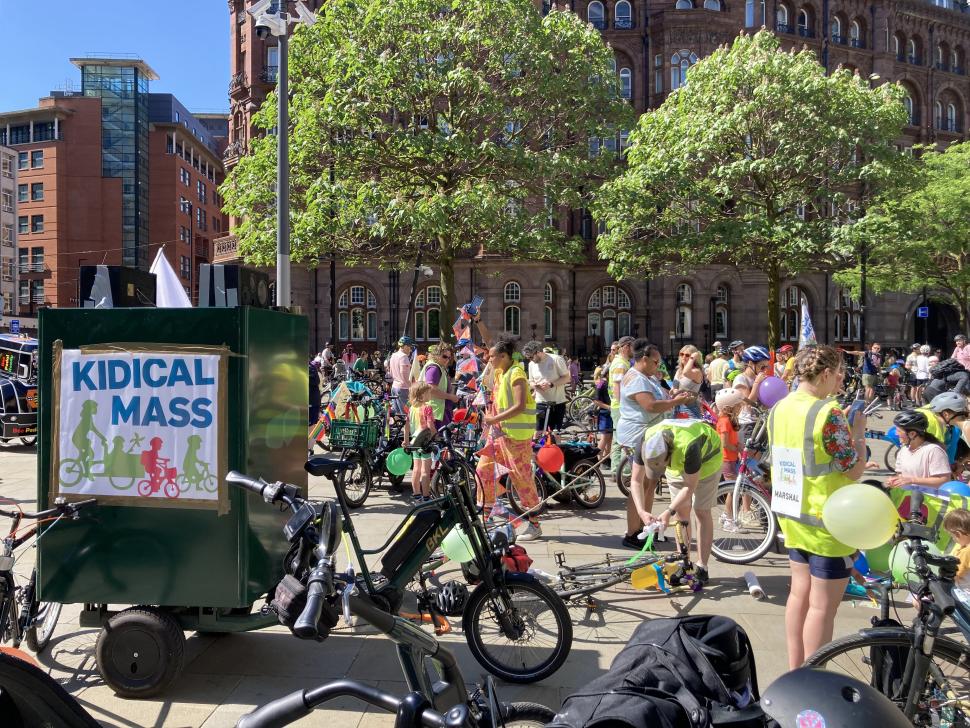



Add new comment
39 comments
And on today's episode of 'La Vuelta a Indeed' the Quest highlights had Carlton Kirby utter the word 'indeed' twenty-three times in approximately 23 minutes of actual commentary coverage, including another instance of saying it 3 times in one sentence. 🙄
And don't get me started on how often Sean Kelly says "difficult" and "difficulty"! 😬
Independent Oxford Alliance?
REG: Right. You're in. Listen. The only people we hate more than the speeding motorists are the ******* Independent Oxford Alliance.
P.F.J.: Yeah...
JUDITH: Splitters.
P.F.J.: Splitters...
FRANCIS: And the Oxford Independent Alliance.
P.F.J.: Yeah. Oh, yeah. Splitters. Splitters...
LORETTA: And the Alliance of Oxford Independents.
P.F.J.: Yeah. Splitters. Splitters...
REG: What?
LORETTA: The Alliance of Oxford Independents. Splitters.
REG: We're the Alliance of Oxford Independents!
LORETTA: Oh. I thought we were the Independent Alliance.
REG: Oxford Independents! C-huh.
FRANCIS: Whatever happened to the Independent Alliance, Reg?
REG: He's over there.
P.F.J.: Splitter!
Way above this lot for August (25.7 mph)
- it's funny how the claimed August cyclists at 30+ don't have enough pride to use Strava If it's not on Strava, it didn't happen
It's never been lost on me that the idiots who try to quote these fantastic speeds fail to realise nearly every cyclist with a reasonably fast bike and the legs to power it carry with them a method of recording their speed with a more accurate device than their car speedo or a speed camera. And not only do we use them but if we manage to hit high speeds we do whatever we can to highlight it on apps like Strava. No laws broken and all the kudos we can glean from it.
What's a Strava?
English are walking record distances but car is still most popular form of transport (gRaudian)
Department for Transport’s travel survey also found the Covid-era shift to cycling continued to fizzle away
https://www.theguardian.com/uk-news/article/2024/aug/28/english-are-walk...
And fun excerpts:
Dangerous Cycling:
"it “would be obvious to a competent and careful cyclist that riding in that way would be dangerous”
So cannot be judged by non-cyclists?
And how do we determine competence?
Or like other road traffic offences are police officers always deemed competent?
I'd judge competence by the cyclist not hitting someone/something and not falling off.
I'd be happy for a cycling police officer to give their opinion on competence, but not a driving police person.
I would offer that that is just luck!
In the same way as: "I've been driving for 50 years and never had an accident!"
Competence is objective and measurable and should be demonstrated.
But what are these measurable objectives?
Well we seem happy* with the offenses of "causing death by dangerous driving" and "causing death by careless driving" which require people to distinguish between driving which falls "below what is expected of a competent and careful driver" and "far below what is expected of a competent and careful driver"...
But yes - the fact we have unhelpful laws to police driving shouldn't be reason to add unhelpful ones for cycling which people understand even less. Not that all drivers never have a very good grasp of the legal requirements of driving either.
* I am not happy.
But most people that drive have demonstrated competence, even if only for a 35-40 min period.
It is by the by that after passing that test of competence many never invest in further training to enhance thier ability or to address skill degradation. This is the area where most benefit could be achieved.
Most people who have ridden a bike for a 34-40 minute period have demonstrated their competence by still being alive!
Indeed - most drivers* have demonstrated this "minimum standard" formally for precisely this half hour or a little more. Once in their life.
Beyond that? They may be great - or less so. Because we're human we can always go (badly) wrong.
However a rapid drop in the minimum standard of safe driving (passing test) is all but guaranteed, because the norm on the roads is not this level, feedback (enforcement) is minimal (and will likely remain so given cost) and people adapt to it.
As for "where most benefit could be achieved"... what benefit, for whom? I think the most benefit for people getting from A to B overall would be to change our underlying philosophy ("it's about how many vehicles we can move / park reasonably safely") and bring in a "sustainable safety" / "safe system" culture. We have a pretty good safety record (albeit by "removing the cyclists and pedestrians and making more space for driving") and we understand the idea of infra and rule fixes which "work with" humans. But that is a (multi) generational task and pretty fundamental...
* There are actually surprisingly many who have never taken a test or are currently banned and are driving.
No such thing: according to drivers.
What about the remaining 10% ?
Sensors couldn't catch them...
So atleast 50% of drivers (20,000 cars) speed through a 20mph zone (perhaps more depending on the breakdown of that 29%, and yet cyclists speeds are the problem
PS its a terribble mix of numbers and letters (i.e 28 per cent and three percent). The cynic in me thinks its on purpose so casual readers either focus on a relatively larger number driving legally (28%) or a relatively low amount breaking the law significantly (three %), and also to make the 10% less obvious!
Hmmm... Not sure why a cycling site would want to mislead anyone about dangerous driving. More a case of it just being a lot of numbers and trying to publish a live blog quickly in the morning. Also, I left the 10 per cent of motorists apparently driving at 10mph out, because it didn't really add anything.
PS. Rule of thumb when writing numbers is to use letters up to 10, then numbers beyond that. For example, you never see '2 riders attacked on the hill'.
I'm going on the basis that Road.cc have just done a copy and paste quote from the residents group and they are the ones possibly misleading folks not R.CC. Apologies if it reads otherwise.
PS And I was always told not to mix numbers and letters as it reads bad; they used 28% (numbers) and should have stuck to numbers (3%) so it would read better and be interpeted better, and say if they arent including those sub 12mph!
By rampaging deer?
Parked on the pavement?
Wondering if someone are Road.CC needs a trip to Specsavers...
I could be wrong but the quote
"“So Morrell Ave is a 20 limit yeah, and you clocked drivers mainly doing 25-35mph, but the few cyclists you claim to have seen doing 30+ are more the issue here? How many cars were doing 25-35?”"
doesn't seem to be by Chris, although I do appreciate you correcting my typo from cary to cars. (Unless someone called Chris has also quote me exactly, and corrected my typo too)
Ah good spot! I deleted your name to move it to after the quote, but then obviously immediately forgot it and typed 'Chris' instead (as a Chris was quoted in the paragraph directly above). My bad, fixed now!
“To cycling Twitter who are getting a bit…well… Yes, it’s downhill. No, we didn’t say it was illegal. Next time we’ll take video. Thanks for popping by.”
Patronising gits. Notice how they casually avoid the main complaint, that they think a cyclist going faster than the speed limit is the problem, not drivers doing the same speed or more.
I am guilty of getting to 30mph in this 20mph zone, its the only speed where I don't get overtaken by traffic.
https://maps.app.goo.gl/57HATgX6g3YJwQTT6
https://maps.app.goo.gl/hXgiA2EkaZ3h736n8
good one
Calling Morrell Avenue 'a residential street' is rather misleading - it does have properties fronting on to it (though set well back from the road, beyond a row of trees and the armour of wall of parked cars), but it's semi-arterial, forming a major route out to the hospitals, and is pretty lightly foot trafficked.
That is just the problem though. A confusion of places, and multi-functional roads. This is almost ubiquitous in the UK, but in other places roads are engineered to serve a single function well. (Here's a good longer article on the smaller "streets" but it covers how the differences in thinking in the UK and NL lead to radically different outcomes).
I think our logic generally runs as your observation does - we end up defining the "routes" by where the motor traffic goes. The problem is that in the UK is pretty much everywhere - because we have fixed it so almost everywhere is through-traffic permeable for motor vehicles. And often we've suggested a higher driving speed with wide carriageways (but but on-street parking...) and ample turn radii. Sometimes even multiple lanes in "residential" areas.
To run the logic of your statement the other way round "Calling Morrell Avenue a 'through road' is rather misleading because it's a residential street, because ... people are living on it"
Yes - the "residential" definition will need a lifetime or two to sort out in the UK (though NL has done a great deal in 50 years...). It will probably need changes "at network level" e.g. more than just street-by-street. (As some have pointed out in NL some if this has been done by essentially road-building - lots of ring-roads and some radial access).
And there are some places where this is probably workable, or wider "boulevards" BUT those tend to have "service streets" on either side of the main road. That allows the main road to keep its function e.g. as an efficient distributor, while parking, walking and cycling (and children playing...) happen on the side streets.
I don't really disagree with any of that, except that you've misinterpreted my comment as a statement of 'what it's for', when it was more an observational statement of 'how it's used'.
My point was that they're trying to represent this as the evergreen sidestreet - quiet, peaceful, serene - that is until Bert cyclist hoons through it, scattering playing children in his wake, when in reality Cyril Steer has already driven everyone off it with his dastardly machines. (Also, there's no particular reason for anyone to want to be crossing it, unless they were planning to climb over the fence into the park.)
It's not an attractive space for people - cyclists or no cyclists.
Pages